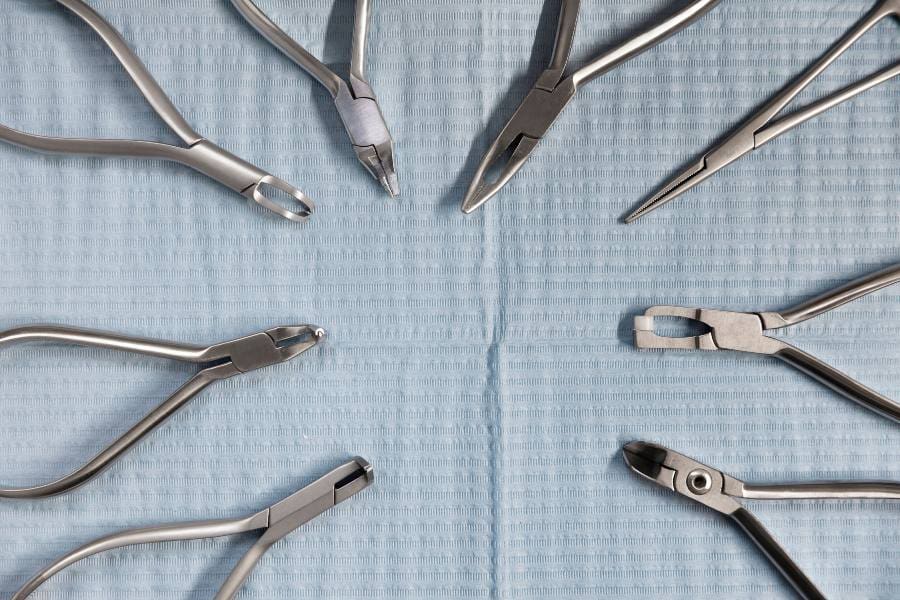
A surgical procedure is a vulnerable place, where every aspect is responsible for the success of the surgery. This includes the cleanness of the room, the patient and doctor uniforms, and of course, the sterile surgical instruments, that will have direct contact with the patient. In this blog, we will focus on sterile instruments, and discuss the standards, so you can understand whether your surgical instruments are safe or not.
When it comes to the types of surgical instruments, everything counts, even, and especially their material. The surgical instruments are mostly made of stainless steel, forged from blanks that have to meet two standards: DIN 17442 and DIN EN 10088-3 8/95.
There are two types of stainless steel used to produce surgical instruments. The first one is Martensitic steel, which includes 1% carbon, and the second one is magnetic stainless steel, which can be autoclaved. This material produces surgical instruments that do not require hardening, for example, cannulas and tweezers.
As mentioned above, surgical instruments are responsible for the successful surgery. These small objects highly influence our healthy future, therefore even their production should meet the international standards of surgical instrument manufacturing.
These standards mostly dictate what kind of material should be used for each surgical instrument. For example, BS 5194-4:1989 is for jointed cutting instruments since it helps with material, hardness, heat treatment, corrosion resistance, design, and other factors that can uplift the quality of the instrument. Some of these instruments are surgical scissors and shears.
Additionally, BS 5194-4 offers a technique for testing cutting ability, a method for testing corrosion resistance using boiling water, and a method for testing corrosion resistance using copper sulfate solution. This helps in assessing and testing the functionality of shears, scissors, and other joint-cutting tools.
Another standard is ISO 13485 lays out the conditions for a quality management system that must be met by a company in order to prove that it can consistently deliver medical devices and related services that satisfy customers and relevant regulatory requirements. As we can see, this one is more technical, rather than the previous one.
Except in cases where otherwise specified, all organizations, regardless of size or nature, must comply with ISO 13485:2016 requirements. When standards are stated as applying to medical equipment, they also apply to related services that the organization provides.
Last but not least, the manufacturer’s name and tracking code are also imprinted on every genuine surgical instrument.
Every manufacturer uses a precise procedure to turn their basic materials into surgical equipment.
The first step in the production of surgical instruments is machining. Metal cutters create teeth, racks, box joints, and serrations from stainless steel and titanium blanks. Machining guarantees that the surgeon will receive the precision they anticipate from the device.
After that, the blank-machined parts are attached and welded together. The instrument is crafted by technicians using a variety of lathes and grindstones to meet the exact weight, size, and dimensions needed by surgeons.
After this, surgical instruments are annealed to be softer and allow for more accurate finishing. They are then rehardened using a vacuum procedure.
They are then traceability-marked, polished, varnished, and examined. This is when the production is complete, and is your turn to inspect them.
Standards also exist for checking the surgical instruments for their quality once you get them. Here are the main ones, you should keep in mind.
With this knowledge, you will avoid low-quality surgical instruments, that could be a potential threat to your patient’s health and life.
As a reliable importer of medical equipment for years, Steri Group is made of high-quality professionals who have a deep understanding of all the standards when it comes to the safe use of each medical item.
With this knowledge, the company knows who to partner with, and how to inspect the product before distributing it further. With this keen eye for detail, many healthcare facilities are now equipped with high-quality medical instruments that help people gain back their healthy lives daily.
Thus, when trusting Steri Group, you are trusting the years of experience, that the company puts to work to make the best available to your healthcare organization.
Concluding the thought, knowing these standards will help you receive and use only high-quality pieces, but even high-quality instruments are prone to losing their shine over time. This is why, it is important to inspect them regularly, to make sure the instruments you are using are still workable and can still serve without harming your patients.
Copyright 2024 SteriGroup all rights reserved.